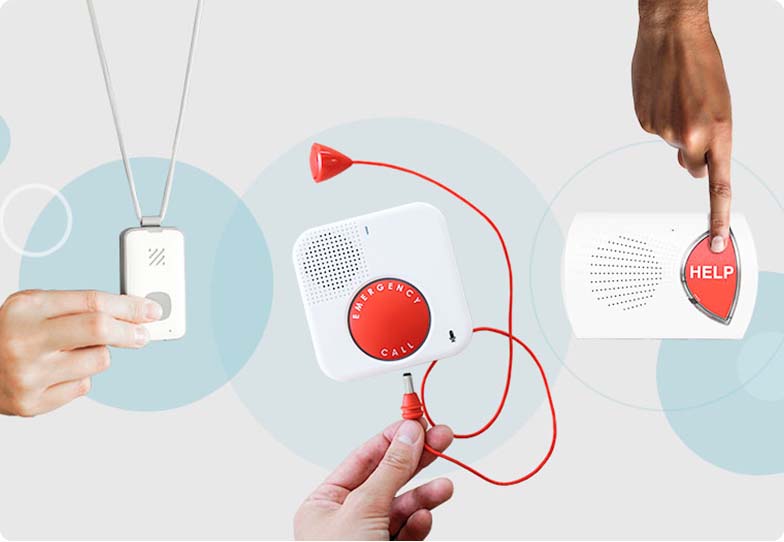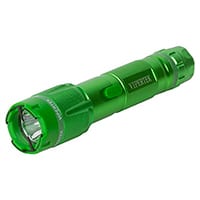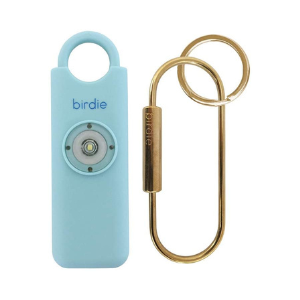Going back to college this fall is different than it’s ever been. To help ensure a safe return to campus, we teamed up with personal safety expert Pete Canavan to put together practical tips you can use on campus or around town.
9 Ways to Stay Safe on Your College Campus
SafeWise experts have years of firsthand experience testing the products we recommend. Learn how we test and review.
9 ways to stay safe on campus

More than 19.6 million students in the U.S. will head to college this fall.
Unfortunately, with so many students, dorm rooms, and valuables, even America’s safest college towns experience some forms of crime—including burglaries, thefts, or assaults.
While safety is a priority for most colleges, it’s still important to take action to improve your personal safety and keep your belongings protected.
Before heading off to college, review these nine safety tips.
1. Get to know the campus safety office
Every school has a campus safety or security office—part of your tuition funds it.
Make the most of this resource. Your college’s website likely provides information like office hours, contact methods, and a plethora of online safety resources.
Next steps:
- Call or email your campus safety office and request information about their programs.
- Find out if your campus has the following services and how you can take advantage of them:
- Blue light emergency phone stations
- Campus escort services
- Safety maps with suggested secure routes
- Support for a safety app like Campus Safe
- Check out your school’s campus safety report. All colleges and universities are required to file an annual report that details a campus safety plan, emergency procedures, and the most recent crime statistics.
The Clery Act requires colleges to implement safety and security practices and track crimes on campus. The federal statute responded to parental outcry after a college student was raped and murdered in on-campus housing in 1986. Before the Clery Act was signed in 1990, colleges weren’t required to disclose crimes and other safety incidents on campus.
2. Take precautions after dark
It’s no secret that a lot of criminals prefer the cover of darkness to the stark light of day. That’s no different on a college campus.
We don’t want you to feel like danger is lurking around every corner, but it’s smart to minimize risks.
Walking alone, parking in a poorly-lit area, or exploring new spots on campus are all actions that come with higher risk at night.
Next steps:
- Use the buddy system when walking at night.
- Call campus security for a ride if you have to travel on your own, or if you’re under the influence.
- Park in a lighted area or highly-trafficked lot if you know you won’t return until after the sun sets.
- Know where you’re going before you head out.
Download the Noonlight app. This is a mobile panic button that uses GPS to track your location and send help when activated. Best of all—basic service is totally free.
3. Keep things on lockdown
This is one of those annoying things parents like to nag about, but we agree with Mom and Dad on this one.
Don’t leave your dorm or apartment without locking up—no matter how quickly you plan to return. And don’t stop there; you can lock up everything from your laptop to your mini fridge.
Next steps:
- If you live on the first floor, make it your practice to close and lock your windows—the same goes for first-floor doors and windows in a shared house or apartment.
- Keep blinds and curtains closed. No reason to give thieves a front-row seat to your goods.
- Add a contact sensor to drawers, the closet door, or the mini-fridge. When greedy paws open your stuff, you’ll get an alert or trigger an alarm, depending on the setup you pick.
- Pick up a laptop lock to make sure your term paper doesn’t walk away while you grab a snack.
- Use a small safe to keep your valuables protected from well-meaning roomies or unexpected “guests.”
Add extra security to everything from your closet to the last package of ramen with Wyze sensors or security cams. Wyze products are affordable, small, and super easy to use.
4. Be smart on social media
Let’s face it—you’re going to be on social media. And it’s a great way to keep all of your loving (slightly annoying?) family members up-to-date while you’re hitting the books.
But social media is also a window into your habits and movements. You don’t want to give scammers, hackers, or potential stalkers a sneak peek at where you go and when your dorm or apartment is empty.
Be thoughtful about what (and when) you post, and use these tips to tighten up your social media security.
Next steps:
- Don’t geotag your photos—it reveals your location to strangers.
- Don’t publicly announce when you’re home alone or are leaving your home unattended.
- Review the settings on each of your social media profiles. Set your posts (especially photos) to private or limit access to your approved connections and friends.
- Disable location services to avoid accidentally revealing where you are when you post a picture of that beautiful burrito you snagged for lunch.
- Don’t stay logged in to your social media accounts—that leaves you vulnerable to hackers if you lose your phone or laptop.
Your brain has enough to worry about without keeping track of all your passwords. Use a password manager to up your online security and make it easier to stay logged out of sensitive accounts.
Video: How to turn off geotags
Subscribe to our YouTube channel and learn how to protect your home, loved ones, and belongings.
5. Be careful getting into your car
Now that you’re (hopefully) parked in a well-lit, public parking lot, it’s time to take safety measures once you get to your car.
Most people don’t think to look in their backseat or under the car before getting behind the wheel. A predator could potentially be hiding in one of those locations—especially if you tend to leave your car unlocked or keep your windows rolled down (don’t do that!).
To help you avoid a scary run-in, we asked safety expert Pete Canavan for his top car safety tips.
- Have your keys or key fob ready well before you reach your vehicle. You don’t want to fumble with your keys under duress if someone is fast approaching you.
- Look around your vehicle and vehicles parked next to you. Check out all sides so you can see if there’s someone sitting alone, loitering, or hiding near your car.
- Don’t multitask when you’re heading to the car. If you grabbed cash from the ATM or have a sudden hankering for the last mint at the bottom of your bag, wait until you’re safely inside your car. Distraction isn’t your friend when it comes to safety.
- Never leave valuables in plain sight. Items like backpacks, purses, laptop cases, or packages should be covered or put in your trunk. Even better, take high-value items with you.
When using rideshare services, always verify the vehicle make, model, and color as well as the license plate and driver details before hopping in.
6. Have a plan
Whenever you head out, make sure you know where you’re going and how to get there.
A little planning can keep you out of harm’s way so you can enjoy exploring the campus or heading into town.
Next steps:
- Walk with confidence and avoid looking confused, even when you’re trying to navigate a new location.
- Make arrangements to get home safely if you’re going to a party.
- Don’t use headphones or bury your nose in your phone—especially if you’re unsure about where you’re going.
- Download your campus map and use GPS to find popular, highly trafficked routes to get to your destination.
- Avoid walking along deserted paths. When in doubt, stick to the routes you know best—even if they take a little longer.
Get to class on time (and safely) with the Campus Maps app. This app was created by a college student and is one of the easiest ways to quickly get routes to buildings on campuses across the country.
7. Pay attention to crime rates and trends
It’s always smart to stay informed. Looking at local crime rates can give you an idea of what types of crimes are most common and whether or not crime is increasing or decreasing year over year.
Campus crime statistics are reported every year in compliance with the Clery Act. Clery Act reporting goes beyond the usual crimes. You can find out about things like fire safety in residential housing, drug- and alcohol-related incidents on campus, and hate crimes.
But crime rates and statistics are just one way to try to gauge how safe your school, dorm, or neighborhood is.
Other things to explore include:
- Community safety initiatives
- Public safety and community services funding
- Safety resources like bike lanes and adequate street lighting
- Healthcare resources (medical, behavioral, and mental)
- Expanded bus or shuttle schedules
8. Learn how to defend yourself
We believe in proactive security measures, and self defense is about as proactive as you can get.
On top of being able to protect yourself if you need to, simply knowing that you can goes a long way—especially if you live alone or regularly move around campus by yourself.
To help get you started, we once again called on self-defense instructor Pete Canavan.

Having some self-defense skills will also boost your confidence and self-esteem, which can go a long way toward protecting yourself.
- Pay attention to the people, environment, and objects around you at all times.
- Don't ignore something that gives you reason to be suspicious. Your "gut" is rarely wrong.
- Keep your personal boundaries in mind. If a situation progresses beyond a certain point and someone crosses the line, you may need to defend yourself.
Basic self-defense training should be simple to learn and easy to remember. The best rule of thumb is to "follow the centerline" of the opponent and attack the eyes, nose, throat, solar plexus, groin and knees—targets along the center of the body.
- Have one or more self-defense items with you. There are many to choose from, but the best are distance weapons that enable you to protect yourself from a distance. These include the obvious pepper spray to less obvious items like defensive/tactical flashlights that are extremely powerful and have a strobe function to disorient an attacker.
Compare the top personal safety devices
Amazon.com price as of post date. Offers and availability may vary by location and are subject to change. Read full disclaimer.
9. Stock up on safety supplies
Keeping a few safety supplies on hand can help you feel more protected. While stun guns aren’t legal in all states, less drastic self-defense products like pepper spray and mace are easier to obtain and can be just as useful.
Many colleges also hand out whistles to new students, which you can use to sound the alarm if you need help or are in danger.
—Safety expert Pete Canavan
Next steps:
- Keep your supplies compact and within reach. Pack safety supplies into a small kit, and fasten the kit on a key ring, lanyard, or backpack.
- If you’re using pepper spray, be sure to test spray periodically and replace it when needed.
Personal safety devices come in all shapes and sizes. Whether it’s a personal alarm or a stun gun, find a device you feel comfortable and confident using.
Online safety for college students
To help you stay safe this fall, we’ve put together practical tips you can use to make sure you (and your personal data) are safe online.
- Invest in some good anti-malware and antivirus protection. If your academic future exists in cyberspace, make sure you’re protected from scammers and hackers.
- Keep everything updated. Operating system updates are a pain—but it’s much more painful to have your PC or laptop destroyed by a malicious attack. Every time you get a prompt for an update, suck it up and do it.
- Use unique passwords. This is another difficult thing to manage, but it’s worth it to keep bad actors from hacking your grades, bombing your Zoom meetings, or stealing your identity. Here's how to make a strong password.
College is an incredible and rewarding experience. But as busy as you’ll be with adjusting to independence, new classes, and new friends, don’t forget to stay safe and maintain awareness.
Following these nine simple steps can significantly increase your chances of having a safe and successful school year.
Recent Articles








